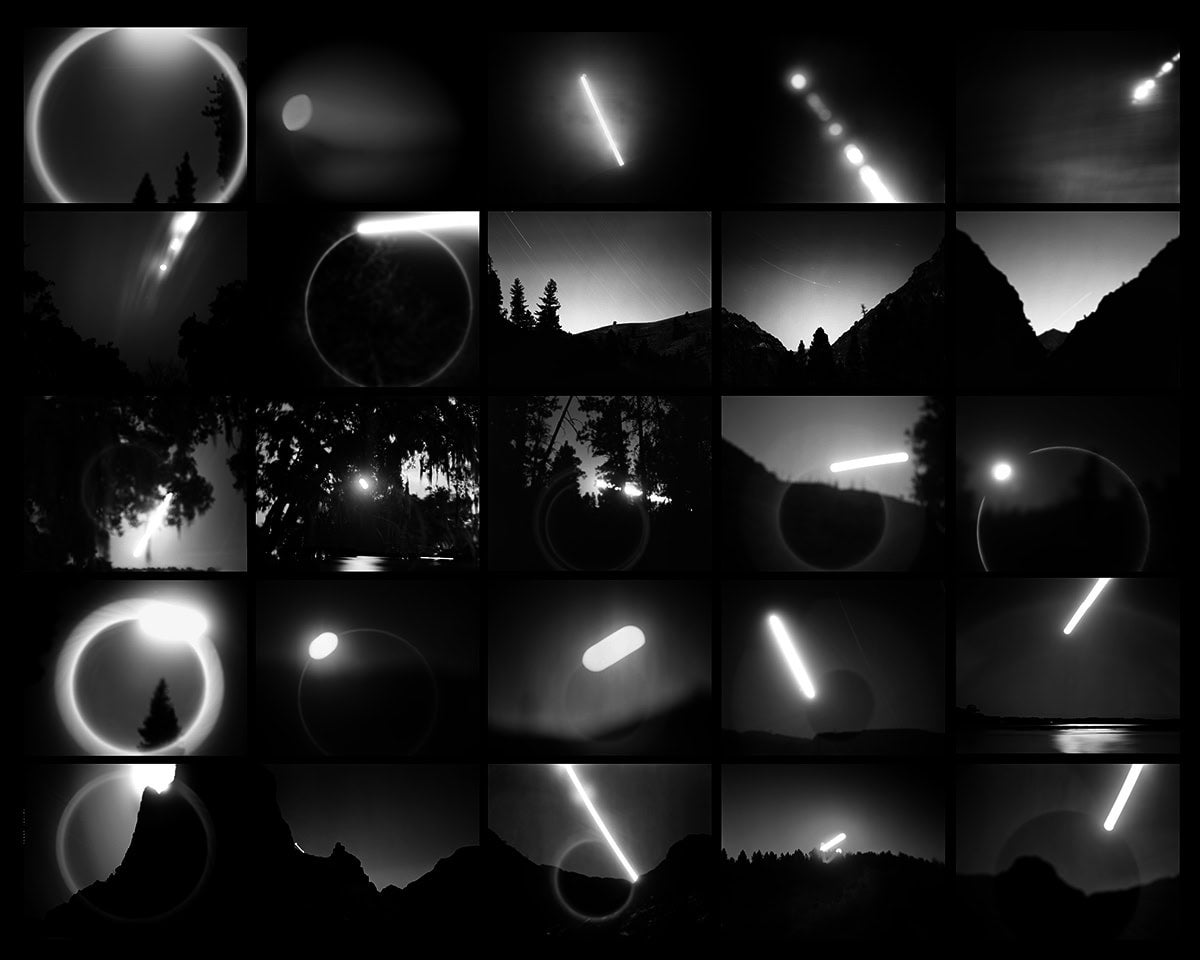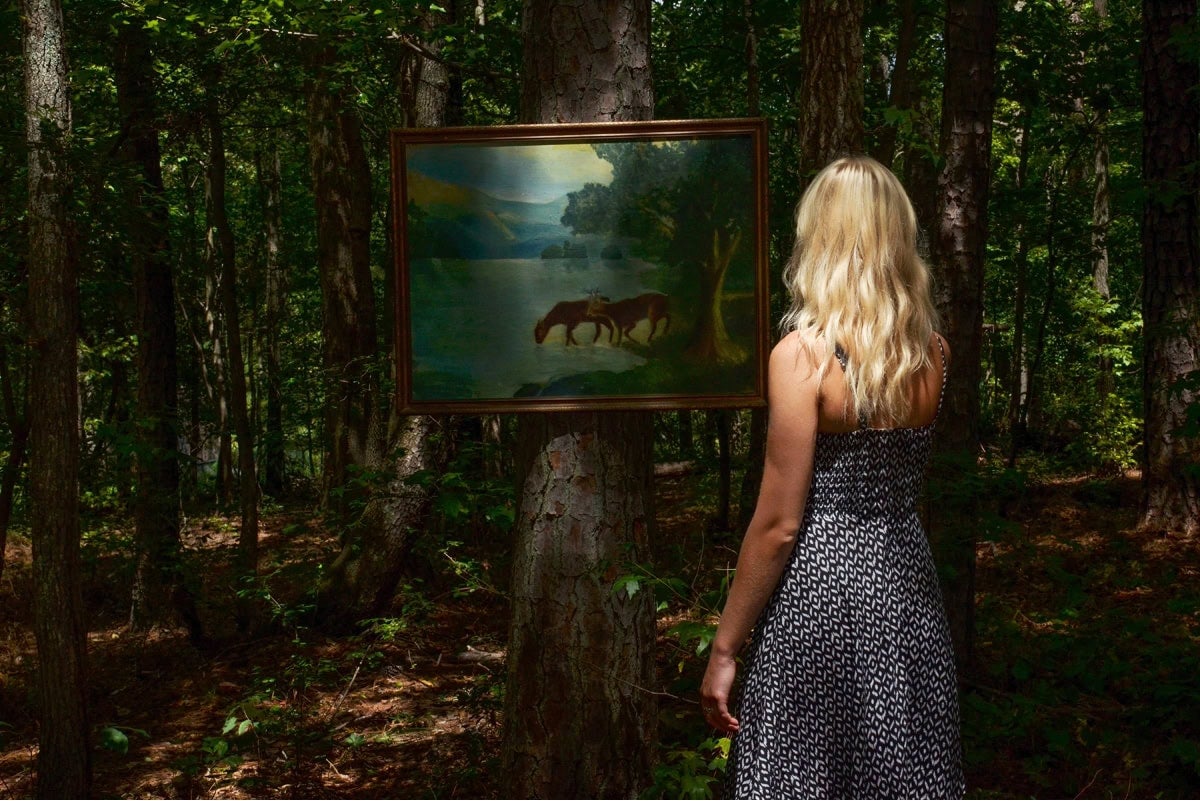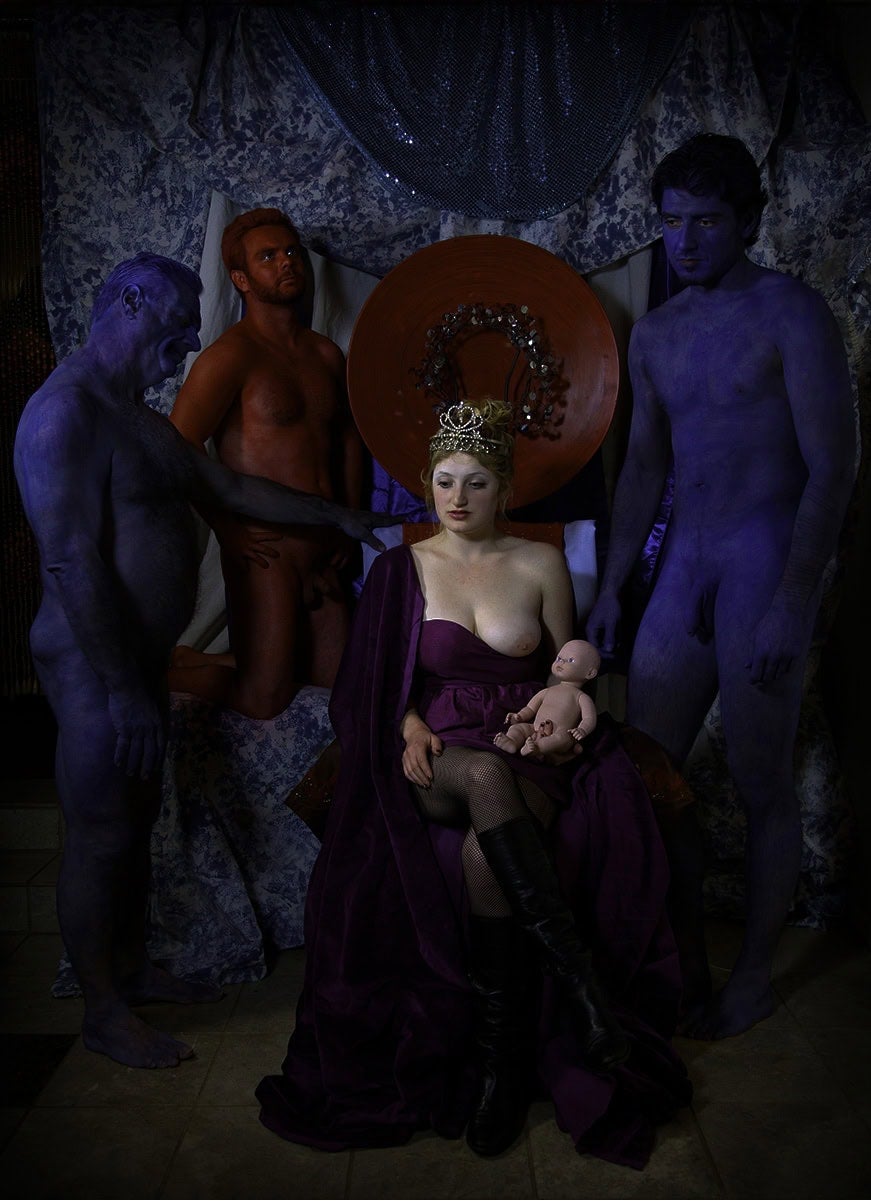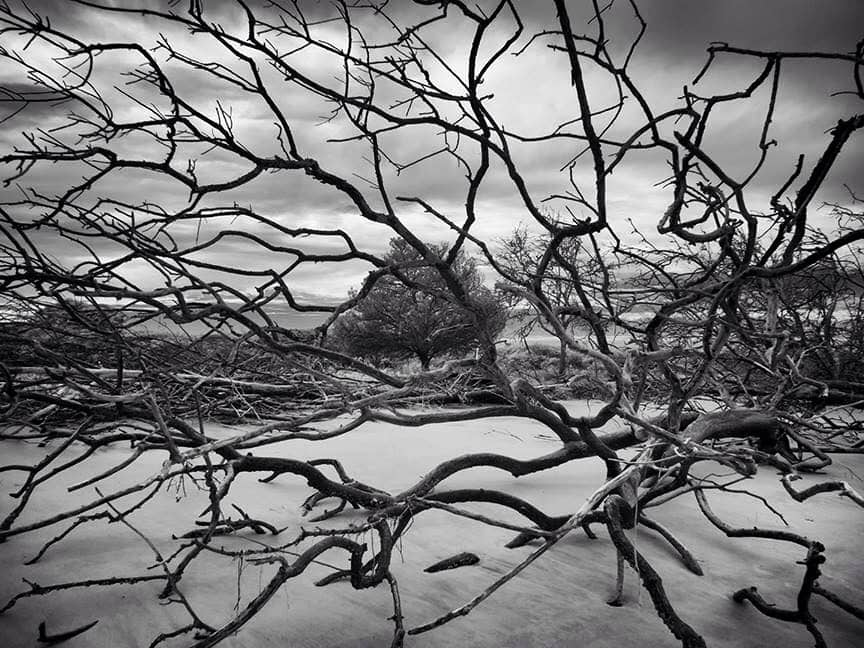In the exhibition “Edge to Edge,” on view at the Museum of Contemporary Art of Georgia through December 10, artist curator Chip Simone fulfills every possible aspect of the title. The show surveys contemporary photography being produced within the geographic boundaries of Georgia, and Simone seems to have explored the state from side to side and top to bottom. The variety of techniques on display is vast, and each composition reaches from one edge to another. Finally, there are so many examples in the show that the works are hung nearly edge to edge. By necessity a hodgepodge, this exhibition provides a thorough overview of established and emerging photographers in Georgia.
The exhibition presents numerous approaches artists take to their work; some works are theoretical and political, and others are more process-based. Even though “Edge to Edge” focuses on contemporary photography, the range of techniques includes archival and pre-digital processes. Even many of the digital photographers are very hands-on with their work, and the complexity of their studio practices comes through in the images. Other artists present work that seems to transcend the category of “photography” to incorporate installation art, printmaking, or painting.
Ansley West Rivers works in the Georgia Low Country and the San Francisco Bay Area. Her silver gelatin print (a traditional darkroom-based black-and-white photo print) Lunar Traces resembles contact sheets — where strips of film are laid directly onto photo paper which is then exposed and printed. The 4-by-5 grid of images features long exposures of the moon as it traverses the night sky. In many of the frames, the moon’s burning line of light is the central focus, and the patterns it makes on the lens dominate that square. In other frames, the image centers more on the landscape that is illuminated by the moon. The third row of Lunar Traces is dominated by low-lying tree branches, moss, and leaves—images taken around Rivers’s Low Country Home. Still other squares feature broad mountains and majestic trees; scenes from California. The silver gelatin print recalls generations of landscape photographers who pioneered black-and-white long exposures, as well as ordinary camera enthusiasts.
A photogram print by Vendla Elizabeth Turk uses an artisanal processes called “Van Dyke Printing” to make an expressive X-ray like image. It shows a ghostly feminine figure in an athletic pose, and where her ribs would be are the stems and leaves of a fern. This lifesize “photo” uses techniques of printmaking and light painting to create unique brown and silver images. Turk applies a thin layer of photo emulsion, which includes silver, onto large sheets of paper. She then lays plants and people onto the paper into artful arrangements before exposing the paper to light. Everywhere the light hits turns brown, while the bodies and plants leave white shapes and outlines. There’s no camera involved, but the work uses darkroom-based processes and chemicals. This is not a quick snapshot of light either; models must lay under the light for minutes while the emulsion is exposed. This leads to soft edges that give the work a painterly, decidedly non-digital quality.
Many other artists in “Edge to Edge” have a similarly complex hands-on approach, even if they use digital processes. Rose M. Barron’s Ma Petite Pomme (2016, archival pigment print) recalls classical Renaissance-style portraits of Mary and baby Jesus surrounded by heavenly figures. But in Barron’s piece, the baby Jesus is a doll, the heavenly figures are three naked men painted blue and red, and the backdrop is yardage of blue fabric—patterned and sequined—draped loosely on the wall. Several elements reference Renaissance visual tropes, but with a modern photographic edge. The figures are arranged to create several triangular compositions, but the classical formality is replaced with self-conscious irony. The models play up the deadpan look of a Renaissance figure, and almost seem to smirk beneath their thick makeup. Mary wears a billowing purple dress evocative of Renaissance royalty, but with with fishnets and boots. There is even a halo made out of what looks like a decorative red platter. Barron selected and arranged all the materials and painted the three men from head to toe. This type of staged photography requires a high degree of preparation from the artist, and intense commitment from the models, which belies the quirky finished product.
There are many works in “Edge to Edge” that take a more classical approach to photography, but still convey a uniquely Georgia style. Jan Kapoor’s simple black-and-white photo Net of Branches, Sapelo Island shows a petrified tree that has fallen into the water due to erosion on a Georgia barrier island. In Kapoor’s image, the tree and its gnarly branches fill the frame, breaking up the background of sand, sea, and clouds. The state’s small strip of coast is beloved for these forestlike beaches.
While each artist in “Edge to Edge” calls Georgia home, this is by no means an exhibition of photography about the state or Southern stereotypes. The range of styles and techniques is refreshing in light of the slick digital work filling so many galleries today. Simone’s admirable curatorial effort excels at fulfilling MOCA GA’s mission to promote Georgia artists.








